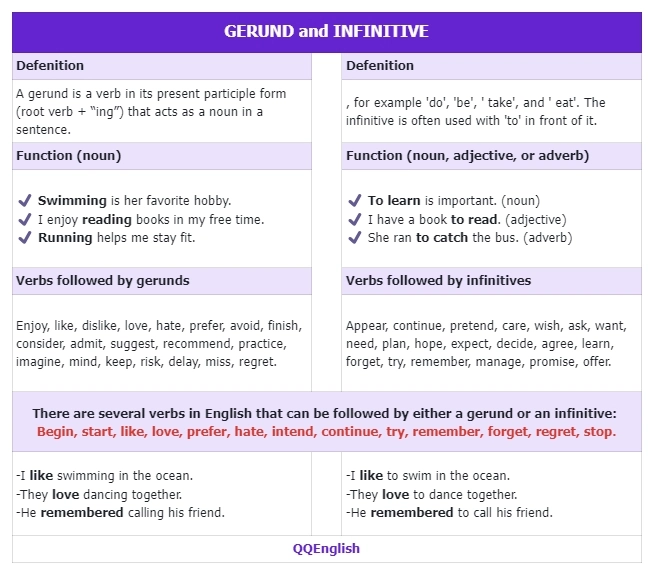
Learn Gerunds and Infinitives with These 5 Simple Tips
February 6, 2024 | 7-min. read
Introduction
The English language has a wide range of features that are sometimes confusing. These confusing features are commonly seen in grammar. There are words that you are sometimes unaware if you are using correctly or appropriately in context.
Gerunds and infinitives are examples of these grammar aspects. In sentences, both gerunds and infinitives are not easy to determine if you are unaware of their rules and usage. Understanding these aspects is challenging, especially when you are unconsciously using them without any background knowledge.
Some ESL students are often confused with the appropriate word to use, whether gerunds or infinitives when having a conversation with another person. With this, the communication process is compromised and sometimes makes the conversation less meaningful.
Are you struggling to understand the nature of gerunds and infinitives? Fear not, because we will share some simple tips to help you with your language-learning journey. Stay on this article and we will keep you updated.
What are Gerunds and Infinitives?
The simplest way to identify that a word is a gerund or an infinitive is by looking at its spelling. Gerunds are verbs ending in –ing and infinitives are the root words. Gerunds and infinitives have differences not just in spelling. They also differ in functions in sentences.
Gerunds are formed by adding the suffix –ing to the verb like sleeping, reading, running, and the like. However, they are not verbs in the present or past continuous tense. If you look at them at first glance, you would think that they are verbs because of their form. Gerunds are nouns and can function as a subject or object in a sentence.
Infinitives, on the other hand, are simple words or root words that do not have any prefixes or suffixes added to them. Infinitives are also simply identified if you see the words “to” at the beginning like “to sleep, to read, and to run.” They are called “to-infinitives.”
Gerunds and Infinitives in Sentences
Gerunds and infinitives make the meaning of sentences clear and meaningful. Gerunds are followed by prepositions such as “to, about, and of.” Look at the examples below:
He is so keen in achieving her dreams.
She thought about travelling next year.
My father did not have a fear of flying when he was a child.
Notice the structure of the sentences above. We cannot say that the words “achieving, travelling, and flying” function as verbs in the present continuous tense because there is already a verb in the sentence.
He is so keen in achieving her dreams. – in this sentence, the verb is “is” followed by an adjective. The adjective is then followed by the preposition “in” and then the gerund “achieving.”
She thought about travelling next year. – this sentence already contains the verb “thought” then followed by the preposition “about” and the gerund “travelling.”
My father did not have a fear of flying when he was a child. – this sentence contains the negative verb “did not have” then the noun phrase “a fear’” the preposition “of” and the gerund “flying.”
Gerunds can function as a subject or object in sentences. Check out the following examples:
Reading makes me a fluent communicator. – subject of a sentence
My mother enjoys painting. – object of the verb
Infinitives in sentences also follow specific parts of speech like adjectives and certain verbs like “ask, need, remind, teach, require, tell,” and more.
The following are examples of infinitives with “to” follow adjectives.
English is difficult to understand.
I can’t have a new phone; it’s too expensive to buy one.
Women are really hard to please.
The sentences below are examples of infinitives that function as an object in the sentence.
My friend asked me to bring his umbrella.
I need you to go to the grocery store now.
Please remind your members to check their dashboards.
The teacher taught the students to be respectful.
The applicants are required to submit their applications online.
Who told you to open the door in the kitchen?
Gerunds and infinitives can easily be spotted in sentences, but their functions cannot. If you want to know how to use gerunds and infinitives appropriately, it is best to check first how you are going to use them in your sentence and what message you want to convey.

How to Learn Gerunds and Infinitives in 5 Simple Ways?
Getting hooked on learning new things about gerunds and infinitives is a good start to improving your language proficiency. Although these two aspects of grammar have already been introduced to you before reaching this particular page, you are still doubtful if you are doing the right thing.
Below are five simple tips for you to be guided on how to learn gerunds and infinitives effectively.
- Know the basic differences between gerunds and infinitives.
If you want to improve your sentence structures when using gerunds and infinitives, you must be aware of the differences between both aspects of grammar. By knowing the differences, it would be easier for you to use them in your sentences.
Remember that using these aspects correctly in your conversations makes you become affluent in the English language and your ability to converse well will surely improve.
- Recognize the common usage and structure of gerunds or infinitives in sentences.
Gerunds and infinitives have their distinct usage in sentences. You only have to think that although gerunds end in “–ing,” they are not verbs that function as verbs. Instead, they are verbs that function as nouns.
Infinitives are also preceded by “to” which we call the “to-infinitives.” They are also the root words of verbs that sometimes are not preceded by “to” and can stand alone in sentences. Pay attention to the structure especially the verb patterns and their position in a sentence.
- Make it a habit to practice their usage in sentences.
We have discussed that knowing gerunds and infinitives is important, but no matter how aware you are and you are not using them always, it’s still like a plateau. You are stuck in what you have already known, and you think that it is right.
However, it is better to practice using them in sentences constantly. With this, the message you intend to express is clearer and intelligible.
- Learn the parts of speech that precede or follow the gerund or infinitive.
It is a fact that you are more knowledgeable only of the few parts of speech in English and not all of them. For example, you know more about nouns, pronouns, verbs, adjectives, and adverbs than other parts of speech like interjections, conjunctions, and prepositions.
Bear in mind that gerunds are preceded by prepositions and infinitives are preceded by “to.”. If you know the particular part of speech, you will have a more comfortable expression of your ideas.
- Don’t be ashamed to seek feedback.
Learning gerunds and infinitives is not on the spot. You have to make mistakes to become good at it. With your mistakes, you can seek feedback from experts like language teachers. If you are studying English online, you can confidently ask your teachers to check whether your sentence is correct or not.
Seeking feedback from others is one way to effectively apply your learning. It does not mean that you are a failure; it means you are constantly learning and it is a sign of improvement. So, never be ashamed to seek feedback.
Conclusion
Understanding gerunds and infinitives can be challenging at first, but you can confidently integrate these aspects of grammar into your English communication by constant practice and determination to improve your skills. Whether gerunds or infinitives in sentences, your goal is to improve your English skills, so start practicing now and see what happens soon.




